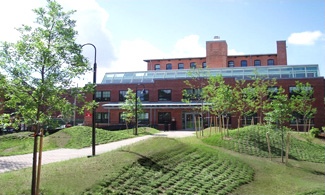
| LEED Rating System: | LEED for Existing Buildings |
| LEED Rating Version: | 3.0 |
| Certification Level: | Platinum |
| Month Completed: | 01 |
| Year Completed: | 2012 |
| Client (School/Department): | CS |
Project Highlights
- 96 Energy Star score for the facility
- 3% reduction in energy consumption during the Performance Period
- 20% reduction in energy consumption since the first year of operation
- 100% of the space maintained by Green Seal Certified custodial services
Project Summary
In January 2011, Harvard University Campus Services began the process of attaining a LEED for Existing Buildings: Operations and Maintenance (LEED-EB) rating for their office building at 46 Blackstone Street. One year later this facility achieved Platinum certification, the highest rating possible within the LEED system. This facility underwent a major renovation in 2006 and at that time pursued certification under the LEED for New Construction system, for which it also earned a Platinum rating. As a single building receiving Platinum certification under two rating systems, Blackstone South is in select company. According to the U.S. Green Building Council it is the first building in New England, the first in the Ivy League, and only the fifth building in the world to achieve such a distinction.
After construction was completed in 2006, the Campus Services department was particularly interested in ensuring that the building was performing to its rigorous design specifications, most specifically the energy consumption targets as predicted in the building’s energy model. A 40% reduction in summer energy use compared to an ASHRAE 90.1 baseline was specified in the original design. When the building was first occupied the facility was consuming 30% more energy than the model predicted, but an ongoing commissioning and management process has improved it to the point that the facility is now consuming 20% less than the original model predicted. Once the energy consumption of Blackstone was reconciled to levels below the energy model predictions, a decision was made to pursue LEED-EB certification.
In addition to energy use, the LEED-EB rating system evaluates the full profile of environmental impacts from a wide range of building programs including the scheduled maintenance of mechanical equipment, recycling and composting, purchasing of sustainable office supplies and paper products, and elimination of chemicals for cleaning and landscaping. During the project’s performance period, Harvard reviewed each operational practice of the building, ranging from commuting practices to the source and recycled content of the printer cartridges purchased for the facility. As a result a number of important changes occurred, including updates to the preventive maintenance routines and adjustments to the source of ongoing consumables.